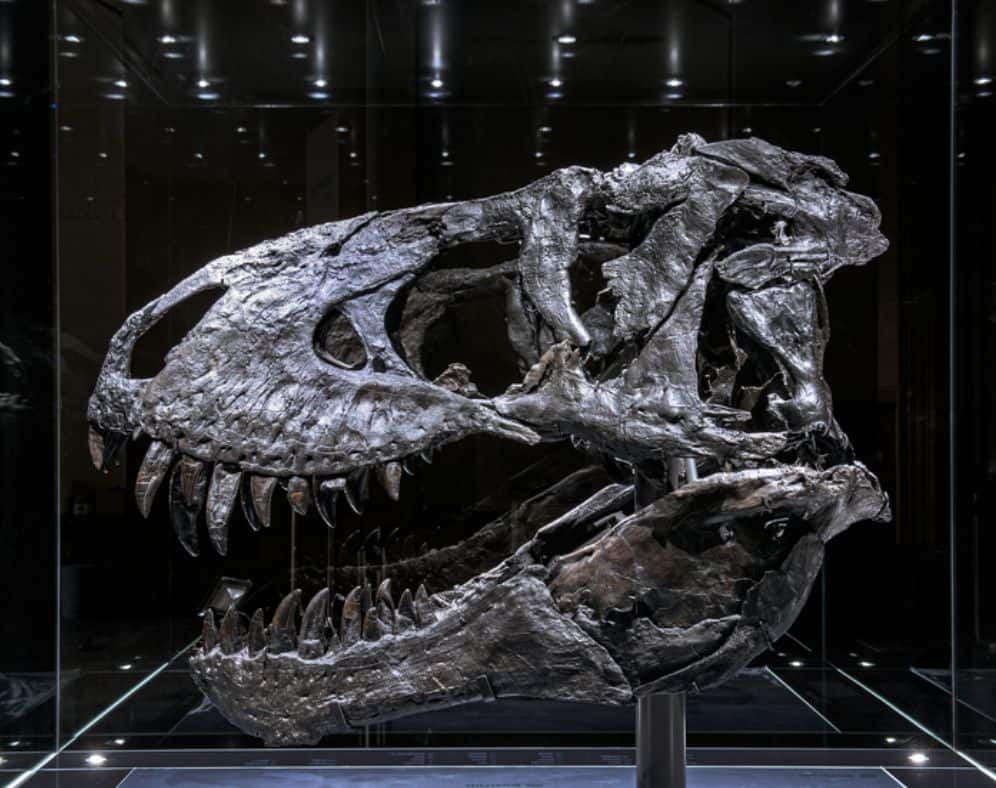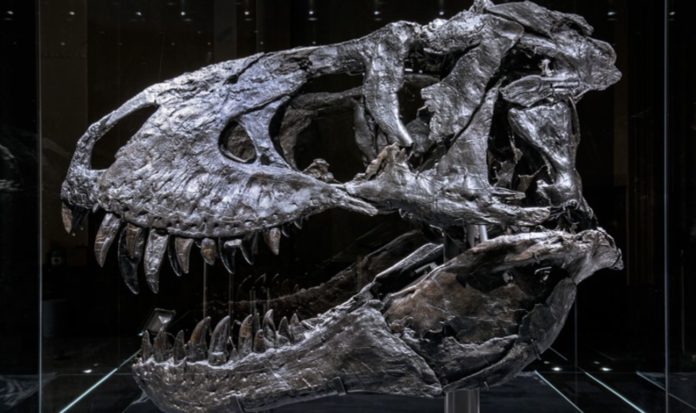Scientists find bone disease in the fossilized jaw of a Tyrannosaurus rex
Using CT-based, nondestructive imaging, German researchers discovered bone disease in a Tyrannosaurus rex fossilized jaw.
As an alternative to the destruction of fossil remains, experts believe that imaging technology could have important uses in paleontology.
The T. rex, a gigantic predatory dinosaur that roamed what is now the western United States millions of years ago, is a well-known subject of today’s popular culture.
Discovered by a professional paleontologist working in Montana’s Carter County in 2010, the most complete T. rex skull ever unearthed. The fossilized skeleton dates back to the Late Cretaceous period, roughly 68 million years.
It was sold to an investment banker, who named it “Tristan Otto,” before loaning it to the Berlin Museum of Natural History. In Europe, there are just two authentic T. rex skeletons, and this one is one of the best examples.

Radiologists at Charité University Hospital in Berlin recently had the opportunity to examine Tristan Otto’s lower left jaw, which was found to be fractured. A CT scanner and a technique called dual-energy computed tomography (DECT) were utilized by Dr. Hamm and colleagues instead of invasive samples and analysis in their study of fossils. DECT uses X-rays at two different energies to provide information on tissue composition and disease processes that is not possible with a single-energy CT scan.
“We hypothesized that DECT could potentially allow for quantitative noninvasive element-based material decomposition and thereby help paleontologists in characterizing unique fossils,” said Dr. Hamm.
Researchers were able to overcome the obstacles of scanning Tristan Otto’s lower jaw, known as the left dentary, using the CT technology. Given that dense pieces can cause distortions or misrepresentations of tissue structures when scanned with computed tomography (CT), the piece’s great density posed a special challenge.
“We needed to adjust the CT scanner’s tube current and voltage in order to minimize artifacts and improve image quality,” added Dr. Hamm.
The left dentary was thickened and had a tumor on its surface that extended to the root of one of the teeth when examined visually and with a CT scan. An abnormally high concentration of fluorine was found in the bulk, a finding that is related with lower bone density. Tumefactive osteomyelitis, an infection of the bone, was confirmed by the mass and fluorine accumulation.
“While this is a proof-of-concept study, noninvasive DECT imaging that provides structural and molecular information on unique fossil objects has the potential to address an unmet need in paleontology, avoiding defragmentation or destruction,” said Dr. Hamm.
“The DECT approach has promise in other paleontological applications, such as age determination and differentiation of actual bone from replicas,” said Oliver Hampe, Ph.D., senior scientist and vertebrate paleontologist from the Museum für Naturkunde Berlin.
“The experimental design, including the use of a clinical CT scanner, will allow for broad applications.”
Dr. Hamm and his colleagues also worked with paleontologists from Chicago’s Field Museum and colleagues from the University of Illinois at Chicago’s Richard and Loan Hill Department of Biomedical Engineering to conduct a CT scan of the museum’s world-famous T. rex “Sue.”
“With every project, our collaborative network grew and evolved into a truly multidisciplinary group of experts in geology, mineralogy, paleontology and radiology, emphasizing the potential and relevance of the results to different scientific fields,” said Dr. Hamm.
Source: RSNA
Image Credit: RSNA AND CHARLIE HAMM, M.D
You were reading: Researchers detect bone disease in Tyrannosaurus rex jaw
